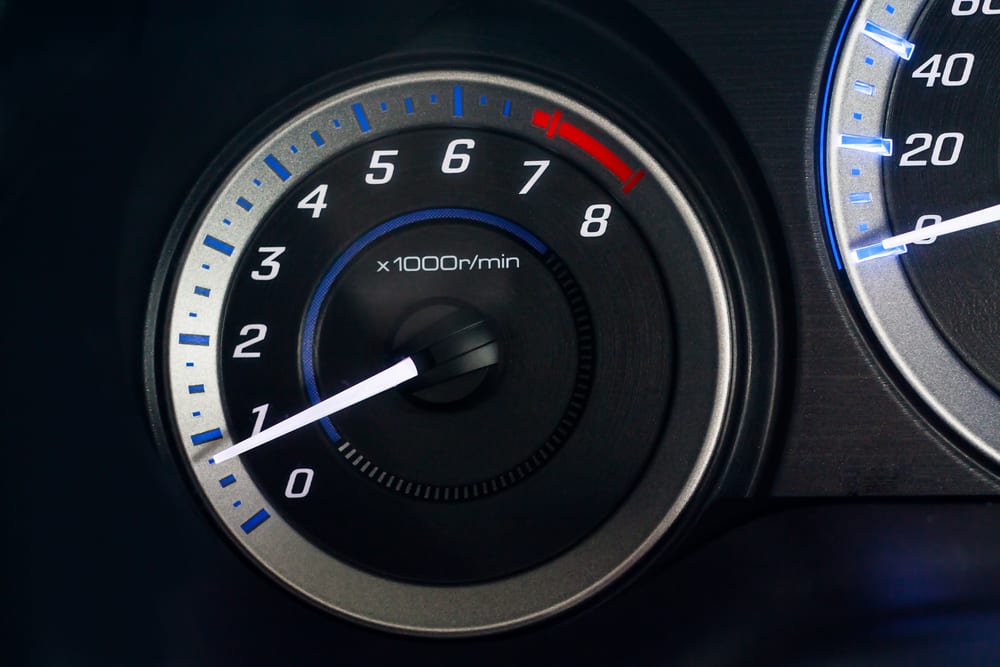

The modern car, truck, and SUV has become more dependent on technology every year. From driver-assisted safety systems to advanced fuel system monitoring and adjustment software, today’s daily driver is a far cry from those of the past. One holdover (typically on manually-shifted vehicles) is the tachometer. In years past the ‘tach’ was used by a driver to determine the best and most efficient time to shift from a lower to a higher gear. Today’s visual tachometer is not as vital as in years past, but it does serve a purpose.
Understanding the Actual Purpose of the Tachometer
Contrary to popular belief, the tachometer is more than a simple gauge that display’s engine speed. The tachometer is actually comprised of a system of monitoring equipment that captures data, relays it to the ECU (engine control unit) and impacts the operation of several independent systems. Officially, a tachometer is a device that measures the rotation of the engine’s crankshaft, which is responsible for rotating each connecting rod and piston through the combustion cycle. As the crankshaft spins 360-degrees, it completes a revolution. The total of crankshaft’s rotation speed is measured in revolutions per minute, or RPM.
The RPM is displayed on a gauge, typically located in the driver dashboard instrument cluster and, in most cases, on the left-hand side. It usually shows a series of numbers from zero to 8 or 9, with multiple lines in-between each whole number on an analog or digital display. The whole number 0 through 9 is actually defined as 1,000 times that number. The final numbers displayed on the tachometer gauge are typically notated in red. As the engine accelerates, a needle will point to the number that equals the engine’s RPM. When the needle is pointed in the redline section, it’s considered to be “red-lining” or operating higher than recommended.
Knowing the tachometer's function, let's look at the top 4 reasons it's important to vehicle operation.
1. Captures and Relays Data to Help Shift Your Vehicle
If you have an automatic transmission and have a tachometer gauge, you’ll notice some consistency when shifting from a lower gear to a higher gear. The transmission is programmed to shift up to higher gears at predetermined engine RPM. The RPM is measured by the tachometer and relays data to the TCM (transmission control module) or ECU. That same RPM is displayed on the gauge. While the gauge itself is simply for display, it lets the driver know when to expect a shift.
2. Let’s Manual Transmission Drivers Know when to Shift
The tachometer gauge also helps a driver know when to shift each gear while driving a manual transmission. Most manually-shifted cars, trucks, and SUV’s should be shifted from a lower gear to the higher gear when the engine RPM gauge displays 3,000 to 4,000 on the tachometer. Driver’s are usually trained to shift the engine based on sound and driving conditions as opposed to the tachometer RPM, but the tach serves an important function by providing a visual indicator.
3. Helps Improve Fuel Efficiency
A working tachometer can also help those with manual transmissions improve their fuel mileage. Most automotive manufacturers will note in the vehicle’s owner manual at which RPM the engine should be shifted for optimal efficiency. To achieve optimal efficiency, today’s modern combustion engine is paired to a specific type of transmission, or transmission gear and gear drive axle ratio. The combination of all three individual systems is known as the power train. Shifting when recommended by the manufacturer helps supply power to the wheels with as little drag as possible. With a reduced “load” or “drag” on the engine, less fuel is burned — improving fuel economy.
4. Extends Engine Lifespan
A combustion engine contains multiple moving parts that all require lubrication in order to operate. As each part moves, friction and in turn heat is created with every engine revolution. The faster the engine spins (or higher the RPM), the more heat will be created. When this occurs, metallic parts that touch will eventually heat until they begin to lose lubricity, which can result in catastrophic failure. When the tachometer and supporting components are working correctly, the transmission can shift on time or drivers with manual transmission can shift as recommended — prolonging engine lifespan.
The tachometer plays a vital role in today’s modern engine by going much further than a moving needle on a display gauge. If you notice the tachometer gauge is not working, it can be a sign of a minor issue, such as a broken gauge or loose wire, or a potentially major problem, such as a damaged timing sensor. If you suspect the tachometer is not working on your car, contact a professional mechanic and have them diagnose what is causing the failure so the right repairs can be completed.



